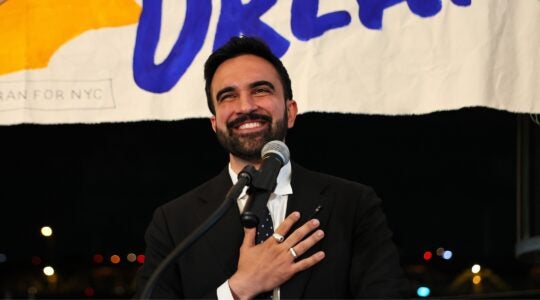The one thing that most reviewers of E.L Doctorow’s new novel City of God (Random House) seem to agree on is that it’s an ambitious work. It’s an unusual, non-linear, non-smooth, rambling postmodern novel that takes on themes of God, science, religion, love, war, popular music, bird watching and movies; it’s also a novel about writing. Not always easy to follow, its several narrative lines and multiple speakers shift abruptly, and those readers who like their novels to have beginnings, middles and ends might find it difficult. But it’s never not interesting, and Doctorow writes beautiful sentences.
The author is perhaps best known for his novel “Ragtime,” a best seller translated into 30 languages, which was made into a film and Broadway play. His books also include “The Book of Daniel,” “Loon Lake” and “Billy Bathgate,” all historical novels set against real events in the 20th century. “City of God” has a contemporary setting, and its characters include a disillusioned Episcopal priest; a married couple, both rabbis who lead an Upper West Side synagogue; Einstein and Wittgenstein; a retired New York Times reporter and Everett who, like the author, is a Jewish writer from the Bronx. The fragmentary episodes, along with interspersed song lyrics titled “The Midrashic Jazz Quartet Plays the Standards,” can be seen as part of a notebook Everett is keeping in preparation for his novel.
The lives of several characters become connected when a large brass cross stolen from St. Timothy’s Church in the East Village is found on the roof of an iconoclastic synagogue — the Synagogue of Evolutionary Judaism — on the Upper West Side led by Rabbi Joshua Gruen and his wife Rabbi Sarah Blumenthal. In trying to solve the mystery of his church, Father Thomas Pemberton, known here as Pem, finds kindred souls in the rabbinic couple, even as his own faith is fading. Everett seeks to tell the story of the cross’ disappearance and recovery in his new novel, based on Pem’s life. A retired Times editor crosses paths with them as he seeks to avenge killings.
One of the most compelling sequences in the novel is the story of Sarah’s father, who was a child in the Kovno ghetto. After his parents don’t return one day, he is placed in the care of an elderly tailor, whose own family was killed. The man’s sewing skills keep him alive, but after fixing a coat for a Nazi official, he stages a private reprisal and is later hanged in the ghetto. The young boy, whose name is changed as he is given new identities, becomes a runner, working for the governing council and sneaking back and forth between ghetto and city. One of his tasks is to bring the ghetto records outside for safekeeping. The sequence ends with the young boy in a cattle car after the ghetto is broken up; he loses his runner’s cap in the rush. The story is unfolded through Everett’s retelling, and Sarah comments that some of it isn’t quite as it happened. Later, when the archive of records is recovered through Pem’s efforts, Sarah finds a picture of her father among his team of runners, all dressed in clothes they had outgrown, their caps over their unsmiling faces.
This is a novel in which characters speak of a “moral scorecard,” where even the believers are questioners.
Some non-believers are said to “lack in holy apprehension” or to overflow with “secular disdain.” One of the reasons Pem is in trouble with Church authorities is a recent sermon he gave in Newark suggesting what the Christian response to the Holocaust should have been. “Something to assure us our faith wasn’t some sort of self-deluding complacency. … Something as earthshaking in its way as Auschwitz and Dachau. … I went into some possibilities. A mass exile? A lifelong commitment of millions of Christians to wandering derelict, over the world?”
At one point, Pem picks up his underlined copy of Augustine’s “City of God.” For Doctorow, the city of God is “New York, New York, capital of literature, the arts, social pretension, subway tunnel condos.” Here, the city that plays prominently in many of his novels is a place of hope and hopelessness, where God seems present and distant, as individuals engage in the search for meaning. In the jacket photo, New York City, hazy but unmistakable, looms behind the author. He writes, “The city may begin from a marketplace, a trading post, the confluence of waters, but it secretly depends on the human need to walk among strangers.” Of looking at photographs of an earlier New York, he writes, “I feel such stillness, the stillness of listening to a story whose end I know. I am looking at times when people had a story to enact and the streets they walked upon were narrative passages.”
In a 1988 interview, Doctorow said “Writers are witnesses. The reason we need writers is because we need witnesses to this terrifying century.” In this novel set at the millennium, Doctorow is a moral and spiritual urban witness, in his storytelling as well as in its form.
Shelf Life: Interpretation
Talmudic Stories: Narrative Art, Composition, and Culture by Jeffrey L. Rubenstein (Johns Hopkins) focuses on six famous tales of the sages from the Babylonian Talmud including the story of Elisha b. Abuya or “Aher,” the Other, and the story of R. Shimon Bar Yohai and his 13-year sojourn in a cave. Rubenstein, a professor of Hebrew and Judaic studies at New York University, analyzes the literary aspects and cultural contexts of these narratives.
The Book of Psalms: A New Translation and Commentary by Martin S. Rozenberg and Bernard M. Zlotowitz (Aronson) includes a translation of the 150 Psalms that preserves the poetry and imagery of the original Hebrew. For each Psalm, the translators include line-by-line interpretations, based on traditional Jewish and modern commentators. The Ethics of the Sages: An Interfaith Commentary on Pirkei Avot by Ronald W. Pies (Aronson) provides a multi-layered and unusual perspective on this frequently studied text that deals with moral and ethical issues. Dr. Pies examines the teachings contained within Pirkei Avot in relation to similar teachings from Christianity, Buddhism, Islam, Hinduism and other spiritual traditions.
The Way of Solomon: Finding Joy and Contentment in the Wisdom of Ecclesiastes a new interpretation by Rami Shapiro (HarperSanFrancisco) is a new translation from the Hebrew, followed by an explanation of the teachings of King Solomon. For Rabbi Shapiro, the message of Ecclesiastes is one of hope, spoken with honesty and compassion. He translates the much-quoted line commonly translated as “vanity of vanities” as “Emptiness, emptiness, all is emptiness.” He writes, “To whose who can see through Solomon’s eyes, those who can see that the wave and ocean are one, Ecclesiastes is a book of liberation holding forth the promise of finding joy in the most ordinary acts of our everyday lives.” Rabbi Shapiro leads Temple Or in Miami and directs the Simply Jewish Fellowship and the Sh’ma Center for Jewish Meditation.
The New York Jewish Week brings you the stories behind the headlines, keeping you connected to Jewish life in New York. Help sustain the reporting you trust by donating today.




